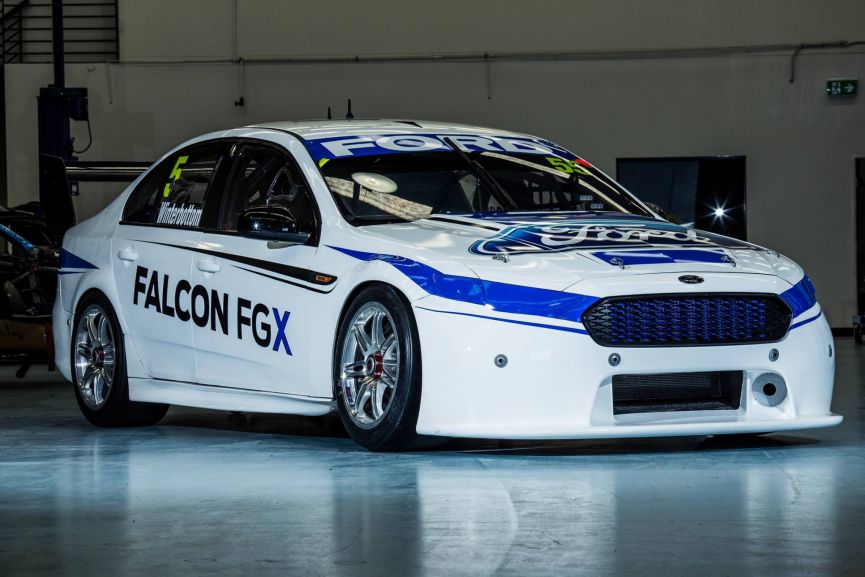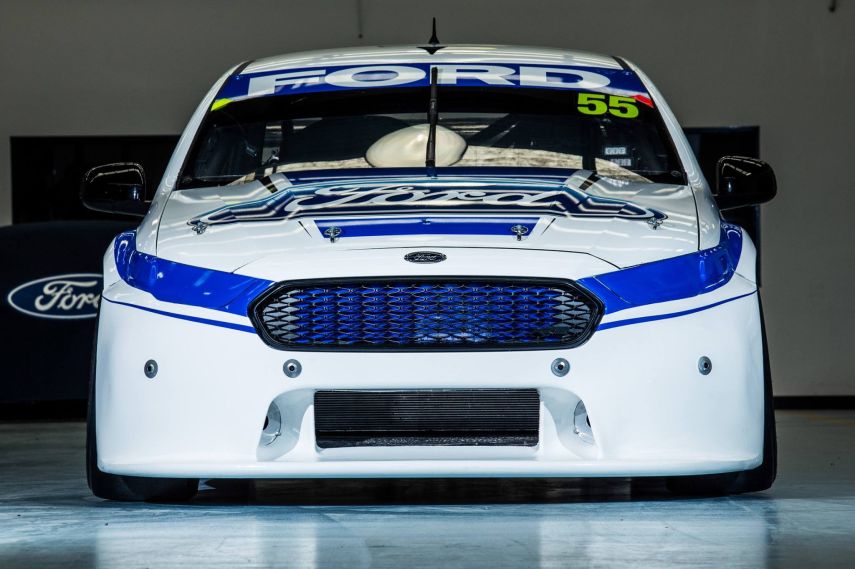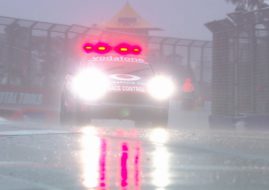You just need to add X to win the championship - Ford FG X Falcon V8 Supercar
Ford FG X Falcon is the latest edition of the famous Ford’s race car which competed in the Australian V8 Supercars Championship and the previous Australian Touring Car Championship since 1973. Numerous versions of Ford Falcons achieved 16 drivers’ championship titles, with 2015 champion Mark Winterbottom as the last on the list. The title was won in the debut season of FG X, because the car was introduced and homologated earlier that year.
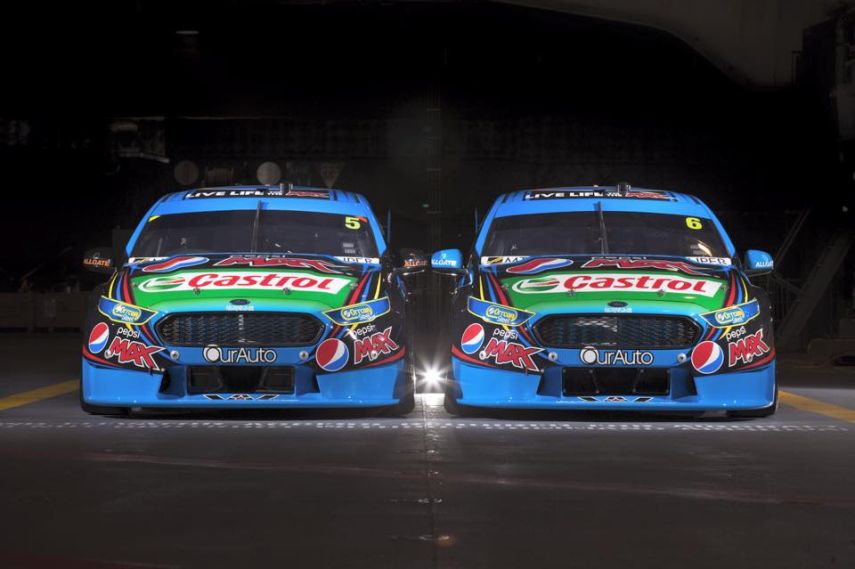
Two FG X Falcons debuted in the first race of the 2015 V8 Supercars season
FG X came in the third year of the New Generation V8 rules
FG X was a second Ford’s model made according to the New Generation V8 Supercar regulations (also called Cars of the Future regulations), which became valid in 2013. The first car under new rules was the previous model Ford FG Falcon, which was adjusted and renamed to FG II.
The main differences compared to the cars before 2013 were the fixed chassis design and specification, engine mounted 100mm further back and down, an increased wheel and tyre size to 18-inch with bigger brakes, polycarbonate windscreens, collapsible steering column with collapsible section in engine bay, transmission incorporates the differential and gearbox in one assembly, adoption of IRS (Independent Rear Suspension) and fuel cell moved further forward in the car to protect from rear impacts.
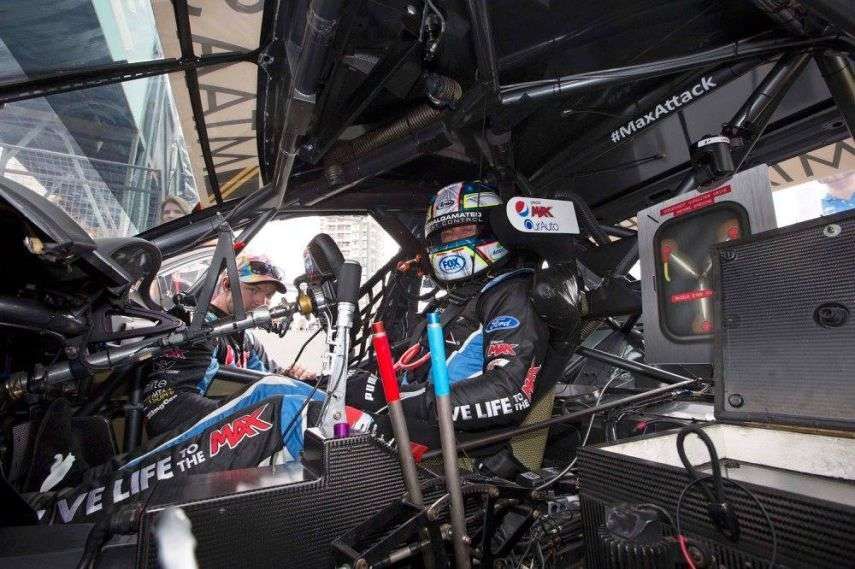
FG X Falcon is prepared under the New Generation V8 Supercar regulations, valid since 2013
5.0-litre V8 engine originated from road cars
The V8 Supercar version of Ford FG X Falcon features a 5.0-litre V8 engine, similar to its main rival Holden VF Commodore. The race car engine originated from the Ford Performance Vehicles’ V8 engine which was in use since June 2010 in road cars. The maximum power is increased from 450 hp to 635 hp. Such a power is enough to move 1410 kg weigh car to 300 km/h, with acceleration to 100 km/h for 3.4 seconds.
In the first two seasons after the new regulations were set, Holden VF Commodore was a dominating car, with two drivers’ titles for Jamie Whincup, teams’ titles for Triple Eight Race Engineering and manufacturers’ titles for Holden.
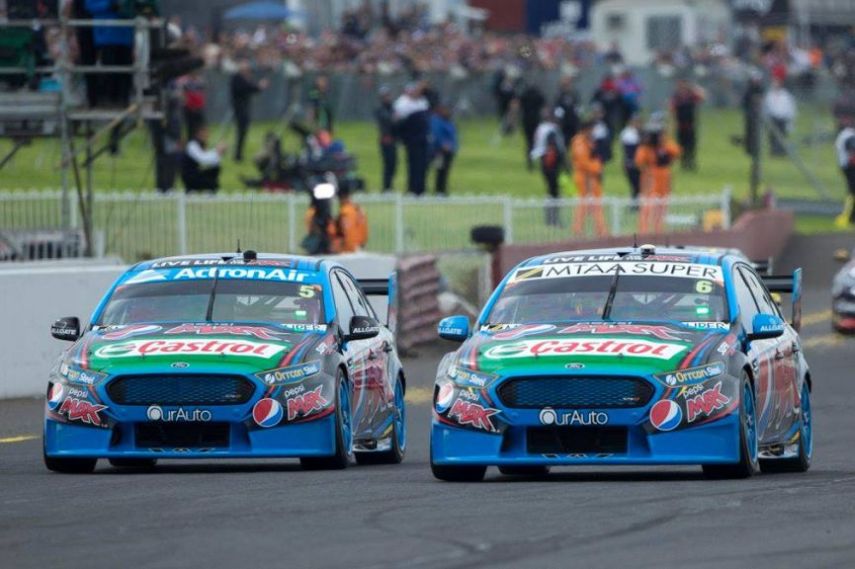
Winterbottom (5) and Mostert (6) were holding 1-2 in the championship until Mostert crashed at Mount Panorama
FG X was aerodynamically better than FG II
For season 2015, Ford Performance Racing finally homologated new car FG X Falcon, which immediatelly took the drivers’ title in its debut season. It wasn’t an easy way.
Ford FG II Falcon V8 Supercar and its successor FG X shared the same ‘New Generation’ chassis, introduced in 2013, so the main differences were the new exterior panels and aerodynamic appendages.
Compared to the old FG II, the FG X’s wing is wider, mounted further back off the boot and lower. It has its two degrees back and also has a taller gurney flap. Up-front the lower cheeks now feature noticeable steps, while the front undertray is extended. The car also has a minor weight reduction.
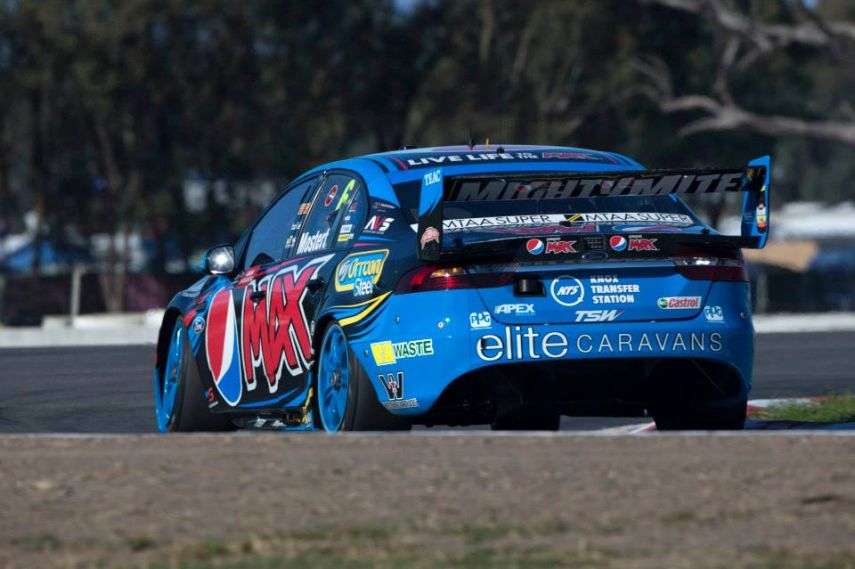
FG X Falcon’s aero package was improved compared to FG Falcon
Weight distribution disadvantage compared to its rivals
Before the homologation of the new model, Ford Performance Racing was asking V8 Supercars Commission to allow them to use bonnets made of composite materials, but the request was denied. According to the rules, race cars must use the same material for bonnet and bootlid as the production car they are based on.
The new FG X, which FPR will homologate to race in 2015, has a weight distribution disadvantage because it retains a steel bonnet and boot lid, whereas the Holden Commodore VF, Nissan Altima, Mercedes-Benz E63 AMG, and Volvo S60 all use lighter aluminium for at least the bonnet.
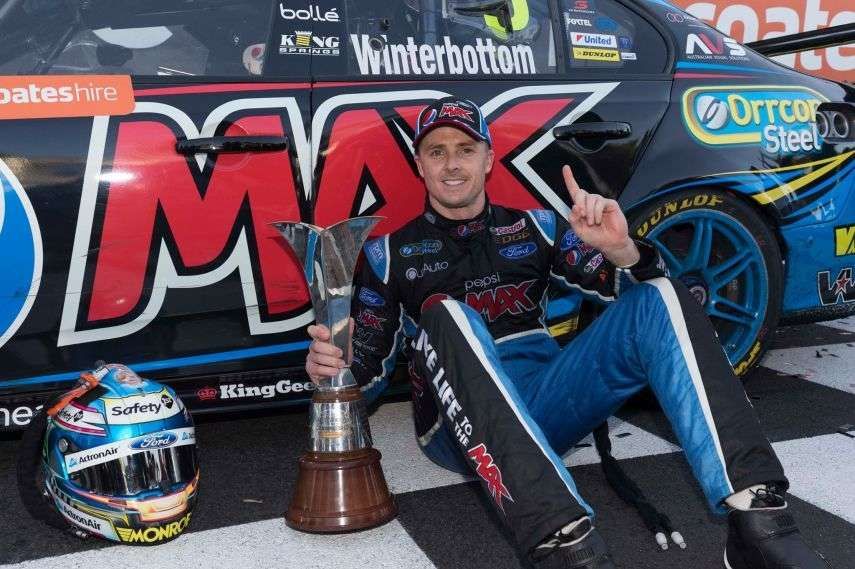
Mark Winterbottom scored nine victories in 2015 driving FG X Falcon
16 victories and drivers’ title in season 2015
Regardless of that disadvantage, Ford FG X Falcon was very competitive during 2015 season and Ford’s drivers took 16 victories. Mark Winterbottom scored nine wins and took his first V8 Supercars title, David Reynolds won two times and finished third in the championship, while Chaz Mostert took five victories before he had a crash during practice for Bathurst 1000, resulting with a broken leg and skipping the remainder of the season.
Winterbottom and Mostert were driving #5 and #6 FG X Falcons of Prodrive Racing Australia, which was in a fact renamed to Ford Performance Racing. Other teams which raced with FG X Falcons were DJR Team Penske, Rod Nash Racing, and Super Black Racing. For 2016 season, the same teams remained with FG X Falcons on the grid, just some driver changes occurred.
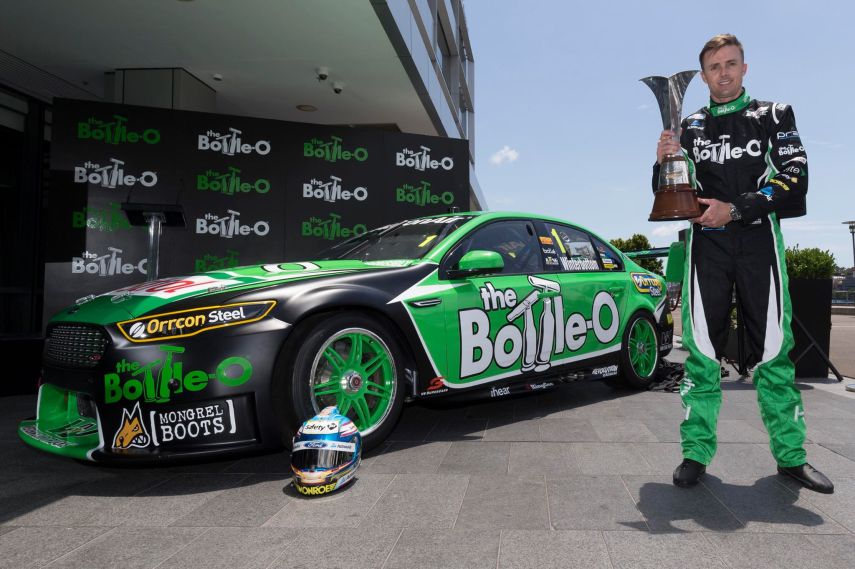
New colours of Winterbottom’s FG X Falcon for 2016 season


